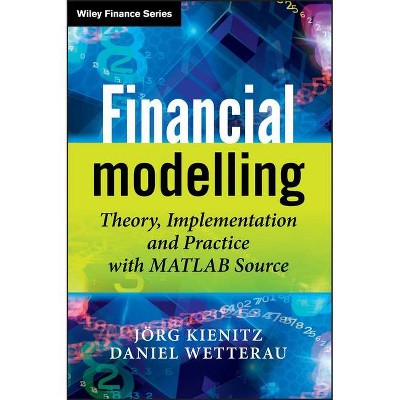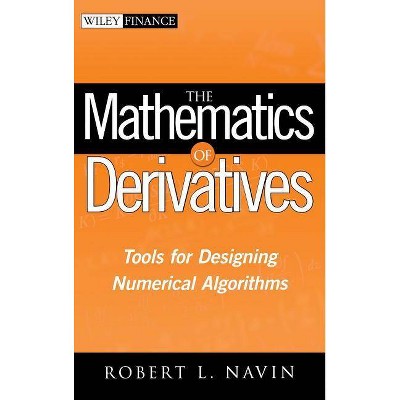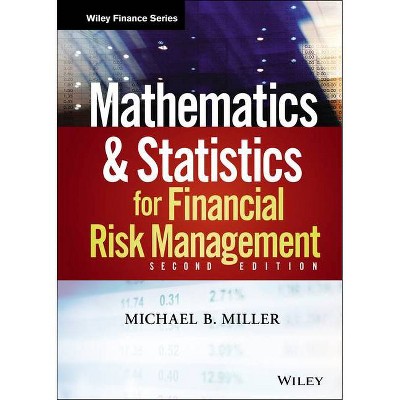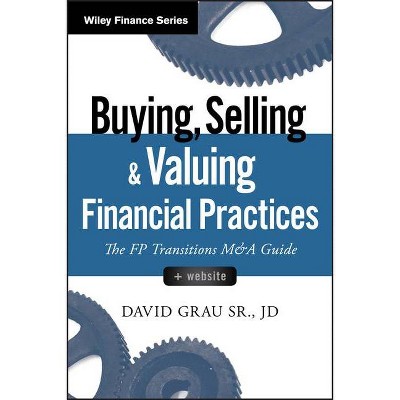The Mathematics of Financial Models - (Wiley Finance) by Kannoo Ravindran (Hardcover)
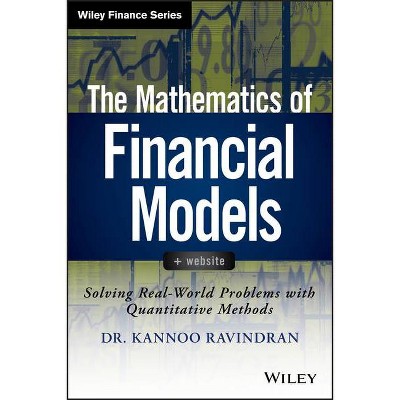
Similar Products
Products of same category from the store
AllProduct info
<p/><br></br><p><b> Book Synopsis </b></p></br></br><b>Learn how quantitative models can help fight client problems head-on</b> <p>Before financial problems can be solved, they need to be fully understood. Since in-depth quantitative modeling techniques are a powerful tool to understanding the drivers associated with financial problems, one would need a solid grasp of these techniques before being able to unlock their full potential of the methods used. In <i>The Mathematics of Financial Models, </i> the author presents real world solutions to the everyday problems facing financial professionals. With interactive tools such as spreadsheets for valuation, pricing, and modeling, this resource combines highly mathematical quantitative analysis with useful, practical methodologies to create an essential guide for investment and risk-management professionals facing modeling issues in insurance, derivatives valuation, and pension benefits, among others. In addition to this, this resource also provides the relevant tools like matrices, calculus, statistics and numerical analysis that are used to build the quantitative methods used.</p> <p>Financial analysts, investment professionals, risk-management professionals, and graduate students will find applicable information throughout the book, and gain from the self-study exercises and the refresher course on key mathematical topics. Equipped with tips and information, <i>The Mathematics of Financial Models</i></p> <ul> <li>Provides practical methodologies based on mathematical quantitative analysis to help analysts, investment and risk-management professionals better navigate client issues</li> <li>Contains interactive tools that demonstrate the power of analysis and modeling</li> <li>Helps financial professionals become more familiar with the challenges across a range of industries</li> <li>Includes a mathematics refresher course and plenty of exercises to get readers up to speed</li> </ul> <p><i>The Mathematics of Financial Models</i> is an in-depth guide that helps readers break through common client financial problems and emerge with clearer strategies for solving issues in the future.</p><p/><br></br><p><b> From the Back Cover </b></p></br></br><p>Finance professionals face daily challenges when solving client problems related to investments, insurance, derivatives valuation, and pension benefit modeling--just to name a few. Finding solutions to these challenges means understanding the core of the problem, and employing quantitative techniques to model and analyze the problem. As part of the Wiley Finance Series, <i>The Mathematics of Financial Models: Solving Real-World Problems with Quantitative Methods, </i> Dr. Kannoo Ravindran teaches readers how to use quantitative tools to solve real-world problems when there is a notion of cost (or money) involved.</p> <p>Dr. Ravindran uses decades of experience to discuss how quantitative methods can help businesses move through common roadblocks related to minimizing costs or maximizing revenue. While the scenarios presented are not exhaustive (because the list of potential challenges is almost infinite), the book provides readers the tools they need to learn to apply the methodologies to any number of everyday scenarios.</p> <p>Included with the text are real-world case studies and solutions that use transparent interactive tools like spreadsheets (for valuation, pricing, and modeling), mathematical formulae, and overview of select mathematical topics (e.g. matrices, calculus, probability, statistics, numerical analysis). The book specifically focuses on addressing difficulties encountered in the construction of zero curves, valuing vanilla and exotic options, and estimation and calibration of parameters used in pricing/hedging models. In addition to including a discussion on hedging strategies, real options, and variable annuities, the author has also created a frequently updated companion website offering additional resources to enhance the readability experience of this book.</p> <p>While some general understanding of basic financial and mathematical concepts is beneficial, this book is appropriate for any student or analyst who utilizes quantitative methods in their daily life. It offers not only self-study exercises but also a brief refresher course on quantitative tools to allow for independent study and a thorough understanding of the concepts.</p><p/><br></br><p><b> About the Author </b></p></br></br><p><b>DR. KANNOO RAVINDRAN</b> consults with corporations on investments, derivatives trading, modeling, and risk management. He also lectures around the world on these topics and runs a private equity fund. Dr. Ravindran pioneered the use of derivatives to manage risks embedded in variable annuity products.
Price History
Price Archive shows prices from various stores, lets you see history and find the cheapest. There is no actual sale on the website. For all support, inquiry and suggestion messages communication@pricearchive.us
